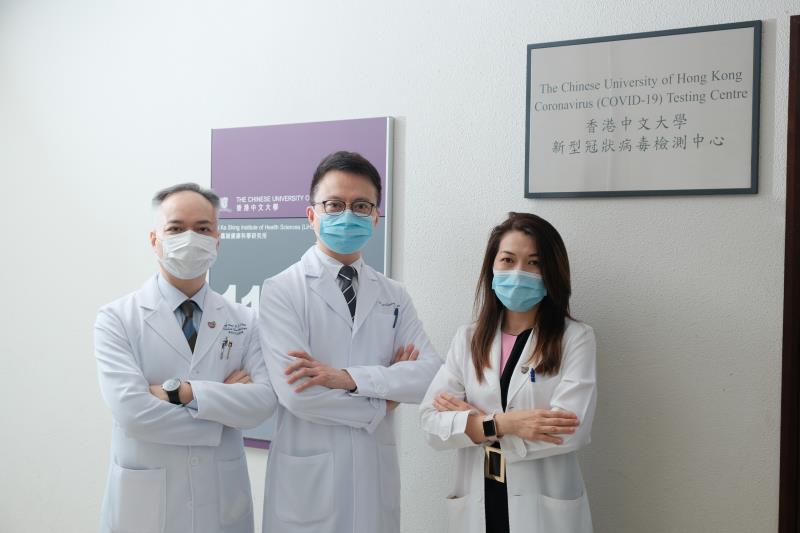CUHK establishes COVID-19 testing centre to identify silent carriers among infants and children





A dedicated coronavirus disease 2019 (COVID-19) stool testing centre with a service capacity of up to 2,000 tests per day has been established by the Chinese University of Hong Kong (CUHK).
From September 2020 onwards, up to 2,000 stool samples from asymptomatic infants and children returning to Hong Kong from high-risk countries or regions are to be screened for severe acute respiratory syndrome coronavirus 2 (SARS-CoV-2) per day, with support from the government for additional laboratory manpower and hardware. The initiative is aimed at improving case detection among individuals with difficulty in undertaking sputum, deep-throat saliva or nasopharyngeal test and, importantly, to break the chains of COVID-19 transmission.
Among 2,128 stool screening tests conducted by CUHK between 29 March and 31 August 2020, six patients were confirmed to have COIVD-19 (detection rate, 0.28 percent).
“Some COVID-19 patients were found to have a positive stool test result whilst their respiratory samples tested negative,” said Professor Francis Chan, Dean of the Faculty of Medicine and Director of the Centre for Gut Microbiota Research, CUHK.
“Stool test provides an accurate, safe and effective option for COVID-19 screening, especially for the paediatric population. Some countries, such as the US, are in touch with us for further details of COVID-19 stool testing,” he noted.
The effectiveness of stool testing for COVID-19 screening was demonstrated in CUHK’s recent faecal viral RNA meta-genomic sequencing study involving 15 patients with COVID-19 (male, 47 percent; median age, 55 years) hospitalized between 5 February and 17 March 2020. [Gut 2020;0:1-9]
“The study shows that active and prolonged ‘quiescent gastrointestinal [GI]’ infection persists, even in the absence of GI manifestations and following recovery from respiratory infection of SARS-Co-V-2,” said Professor Siew-Chien Ng, Associate Director of the Centre for Gut Microbiota Research, CUHK.
Eleven patients in the study had moderate-to-severe COVID-19, and two patients required admission to the intensive care unit (ICU). All patients had respiratory symptoms, while one also had diarrhoea at presentation. The median duration of hospitalization was 21 days.
At baseline (ie, date of first stool sampling after hospitalization), seven patients had a positive stool test result for SARS-CoV-2 despite an absence of GI symptoms. These seven patients were shown to have significantly higher coverage (p=0.0261) and density (p=0.0094) of the 3’ vs 5’ end of SARS-CoV-2 genome at baseline, with persistent active viral infection detected in three patients’ GI tract during the entire course of disease.
Collinsella tanakaei, Collinsella aerofaciens, Streptococcus infantis and Morganella morganii, known to be associated with opportunistic infections, were present in higher abundance in faecal samples of patients with high SARS-CoV-2 infectivity vs low-to-none SARS-CoV-2 infectivity.
Faecal samples with high SARS-CoV-2 infectivity were also found to have alterations in microbiome functionality, with an increase in functional capacity for nucleotide metabolism, glycolysis and amino acid biosynthesis, compared with those with low-to-none SARS-CoV-2 infectivity.
“Our study’s findings highlight the potential of chronic and persistent SARS-CoV-2 infection via faecal-oral viral transmission, as well as the importance of public health surveillance,” said Ng. “Therapeutic approaches, such as eliminating gut SARS-CoV-2 activity, and modulating gut microbiome composition and functionality, should be explored.”